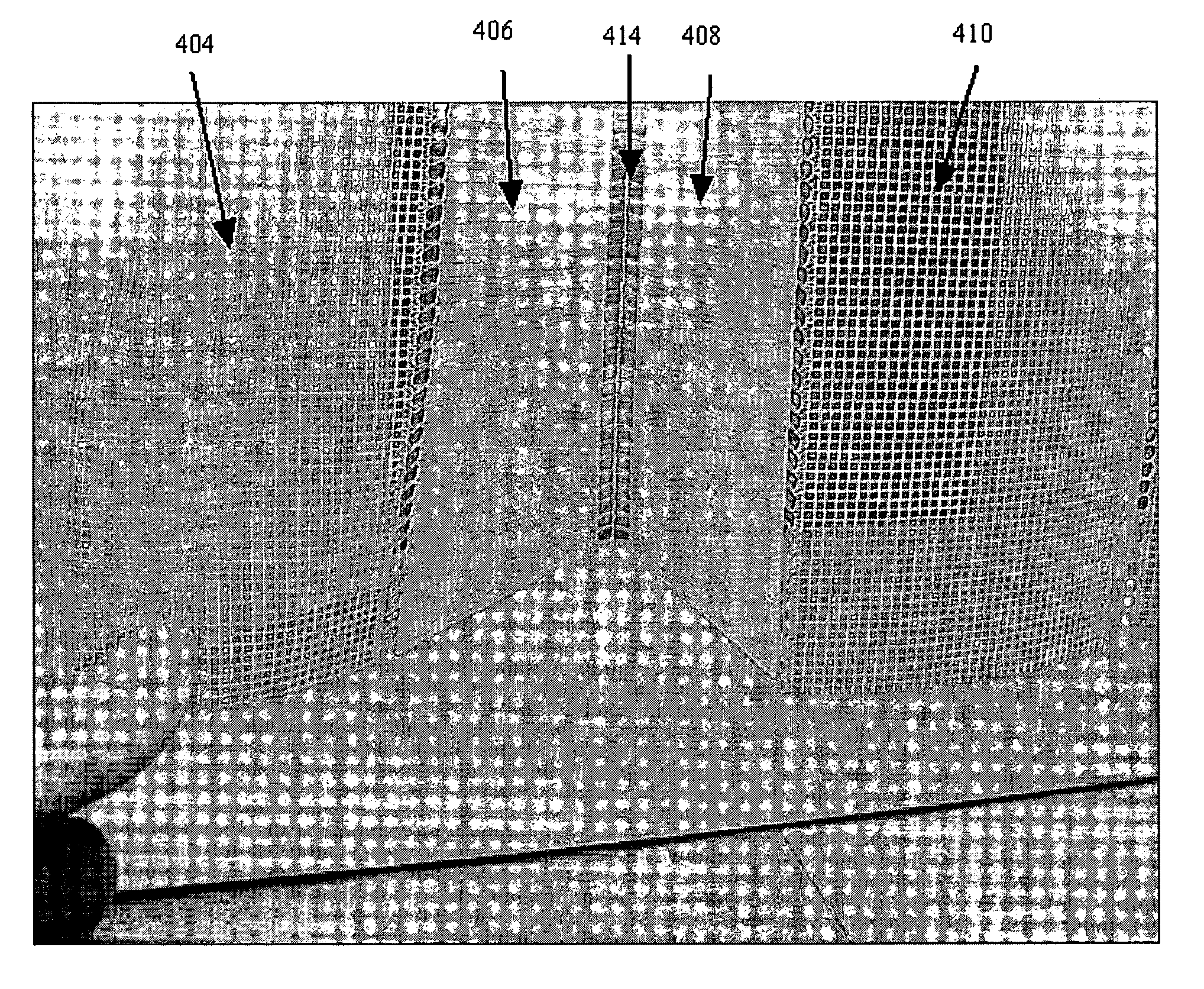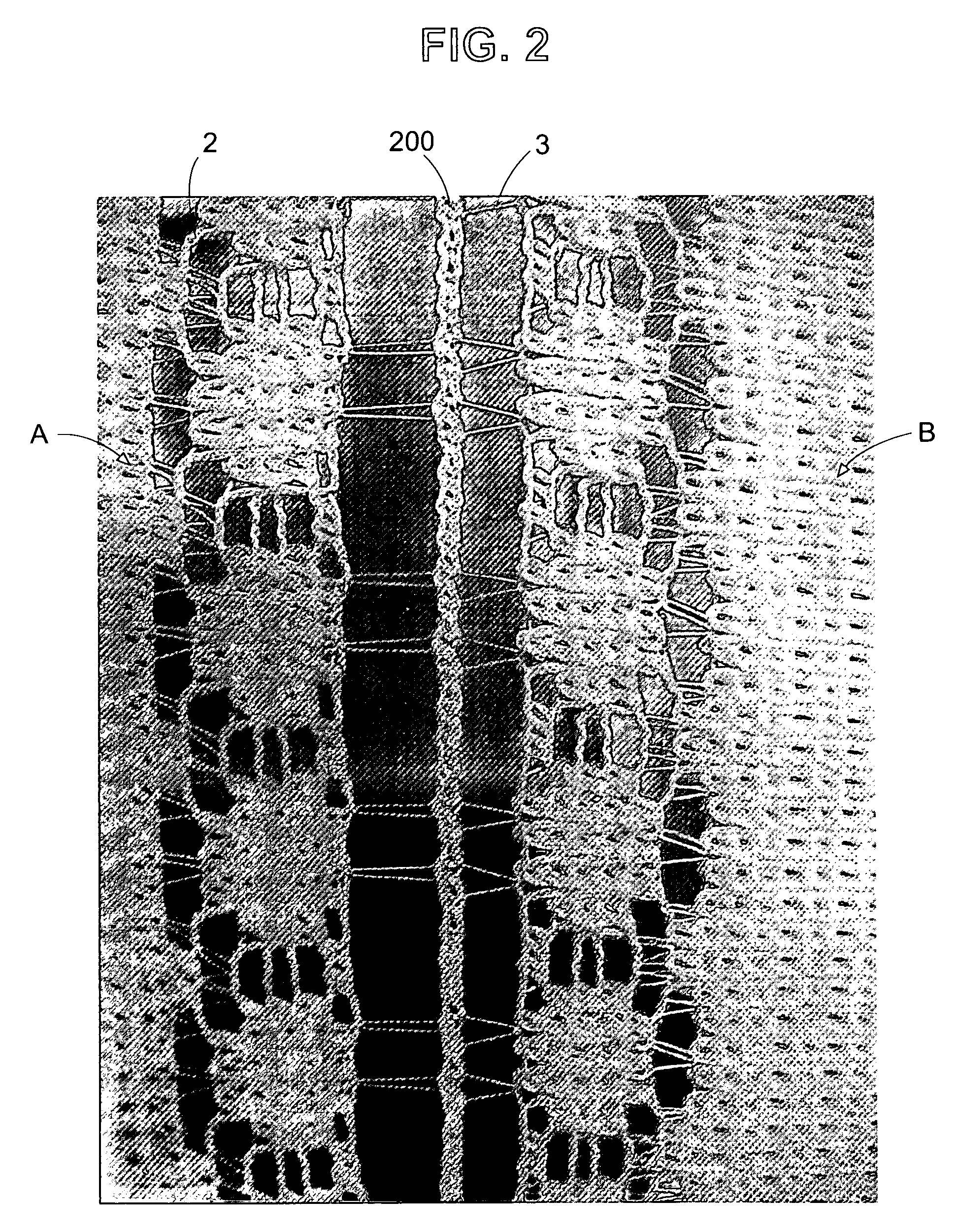Frayless frangible connection for fabric and vertical blind system incorporating the same
a vertical blind system and fabric technology, applied in the field of frangible connection, can solve the problems of affecting the comfort of the occupants, requiring extra steps to cut the fabric accurately, and affecting the strength or appearance of the fabric in the finished product,
- Summary
- Abstract
- Description
- Claims
- Application Information
AI Technical Summary
Benefits of technology
Problems solved by technology
Method used
Image
Examples
Embodiment Construction
[0060]An arrangement of a first embodiment of a vertical blind incorporating the present invention is shown in FIG. 1. FIG. 1 illustrates a single fabric panel 100 comprising fifteen louvers of a vertical blind 101-115. This window treatment has a pattern 120 that spans the width of the panel. As illustrated, the design continues from one louver to the next. The individual louvers for this window treatment have been knit in a single panel to be separated after they are finished, as described below, assuring an accurate alignment of the pattern when installed. Each of louvers 101-115 are separated by a tear away fringe, which enables the louvers to be separated for installation.
[0061]FIG. 2 is a detail of the tear away fringe 200 of the present invention. The tear away fringe 200 is shown running vertically between two adjacent louvers A and B. Connector yarns 2 and 3 are shown connecting tear away fringe 200 to the edge of louvers A and B respectively. Prior to installation of the l...
PUM
 Login to View More
Login to View More Abstract
Description
Claims
Application Information
 Login to View More
Login to View More - R&D
- Intellectual Property
- Life Sciences
- Materials
- Tech Scout
- Unparalleled Data Quality
- Higher Quality Content
- 60% Fewer Hallucinations
Browse by: Latest US Patents, China's latest patents, Technical Efficacy Thesaurus, Application Domain, Technology Topic, Popular Technical Reports.
© 2025 PatSnap. All rights reserved.Legal|Privacy policy|Modern Slavery Act Transparency Statement|Sitemap|About US| Contact US: help@patsnap.com



